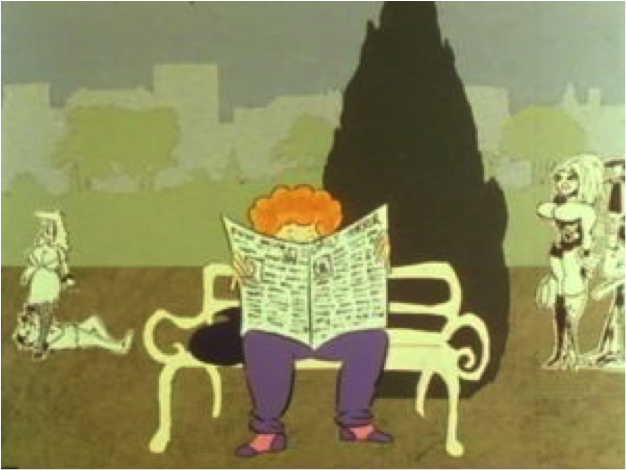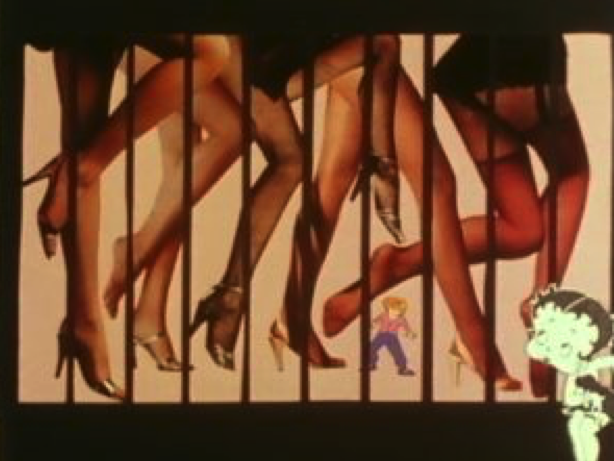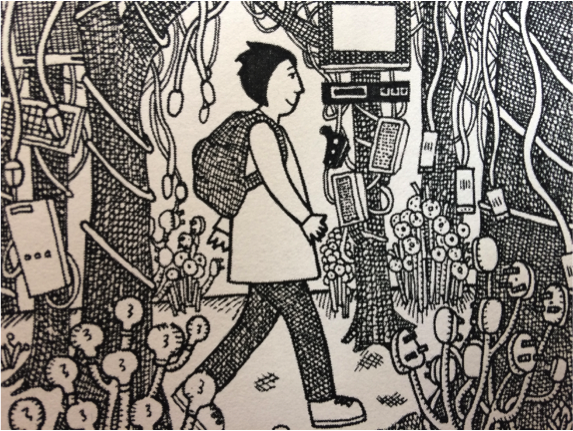Leeds Animation Workshop (LAW) started in 1977 as a campaigning group of female friends. This group was the first British, all female animation collective, and to date it has produced and distributed approximately 40 short films, making use of animation to explore mainly social issues. Based in Leeds, a city with a strong culture of left wing and feminist activism, LAW’s films were a local response to political issues and part of the oppositional culture of the 1970s and 1980s Britain. Terry Wragg, one of the founding members of LAW, has recounted: “We were part of an alternative England” (Wragg, 2017). Their work, alongside countless magazines and news-sheets, was disseminated to small groups at grassroots level, with their films gaining wider exposure on Channel 4, airing the cultural politics of the time as an antidote to Thatcher’s Britain. Animation as a medium for their messages was a practical, economic choice enabling them to produce films, “for ourselves, to express what we wanted to say” (Wragg, 2017). Low tech equipment, the kitchen table replacing the studio, smaller crews, and no actors meant less need for financial investment and facilitated collective decision making, a significant part of the workshop ethos. Without ties to commercial funding, LAW produced films directly for and coming out of the nascent left wing movements, agitating for gay and women’s rights, pro environment, anti-nuclear, anti-imperialism and communal living.
Radical film production collectives of the 1970s and 1980s were striving for independence from mainstream film production and many came out of the UK Workshop Declaration, an agreement formulated by trade union ACTT (Association of cinematograph, Television and Allied Technicians), Channel 4 and the BFI, which helped subsidize many non-commercial filmmaking organizations. This granted LAW long term security and good working conditions, and was, according to Wragg (cited in Tasker, 2016), part of their “entire raison d’être”. The Women’s Liberation Movement formed the bedrock to their output with Leeds central to the organization. Give Us a Smile (1983), which was made during the time of the Yorkshire Ripper murders that affected women living in the area, is their most explicitly feminist film. Moving between live action, animation and collage, it combines real male police officers in uniform, whose aggressive questions are taken from a 1975 police report. “What were you wearing at the time?” “Did you smile at him?” is asked to the cartoon protagonist who trudges along the street, caught up in a sea of sexist advertising and vicious catcalling. A climactic arson attack on a porn shop reflects the events occurring in Leeds at the time by feminist groups. As with many of LAW’s films this was a call to action, used for police training, aiming to change the police’s attitude and the lack of support for women.
Other strategies used in LAW’s films have strived to entertain and draw in the audience using humour, regional voices and settings, with most lasting no more than 15 minutes. These aspects separate their practice from avant-garde feminist films of the time, characterized by an alienating aesthetic. LAW’s films addressed the issue of representation going against the waif heroines of commercial animation. For instance, the childlike Betty Boop appears in Give us a Smile as an ironic reference.
Early female characters have more in common with popular UK strip cartoons, as it occurs in Risky Business (1980), where a female shop steward resembles the Daily Mirror’s belligerent, working class hero Andy Capp. With her mop of hair, and northern accent, she takes on the bosses as she strives for better working conditions. The film explicitly addresses issues around class exploitation, using a female narrator.
Other techniques to explore difficult subjects include the use of fairy tale narratives. For example, Did I say Hairdressing? I meant Astrophysics (1998) tells the story of a scientist wizard and his two daughters, examining how girls are shut out of the male dominated world of science.
Following in the tradition of political cartoons, satire is used to highlight social issues. Out to Lunch (1989) uses cut out animation to show how language excludes women, one of the central tenets of early feminist film theory. Set in a cafe, symbols of food and even words in the menu; “ego soufflé” become part of the oppression. LAW also seized on animation’s ability to metamorphose characters and make objects move. In Alice in Wasteland (1991), the narrator telescopes and retracts while explaining many serious environmental issues. These are rapidly shown in a whirlwind trip of bright drawings, upbeat music, narrated by an inquisitive, modern day Lewis Carroll heroine.
Despite the demise of community activism, the absence of coherent political movements and the dismantling of the Workshop declaration in 1991, LAW has maintained its practice and political stance over the years. Their most recent film tackles modern day slave labour and carries on their close collaboration with social movements. Their production and distribution today relies on crowd funding and digital streaming. Yet, the resurgence of many new feminist film groups and the demand for LAW’s films at festivals is ensuring the continuation of interest for these works into a new generation.
References
Lant, A. (1993), “Women’s Independent Cinema: The Case of Leeds Animation Workshop”, in Friedman, L. D. (ed.), Fires Were Started, British Cinema and Thatcherism, London: Wallflower, pp. 159-181.
Tasker, Y. (2016), “An Interview with Terry Wragg on the Work of the Leeds Animation Workshop”, Feminist Media Histories 2 (2), Spring, pp. 122-132.
Wragg, T. (2017), Interview with the author, May.
Else Thomson is a first year PhD student at De Montfort University. Her research investigates the impact of women filmmakers and feminism within the British workshop movement in the 1970s and 1980s, linking these to contemporary female led film collectives.





4 comments for “The Leeds Animation Workshop”